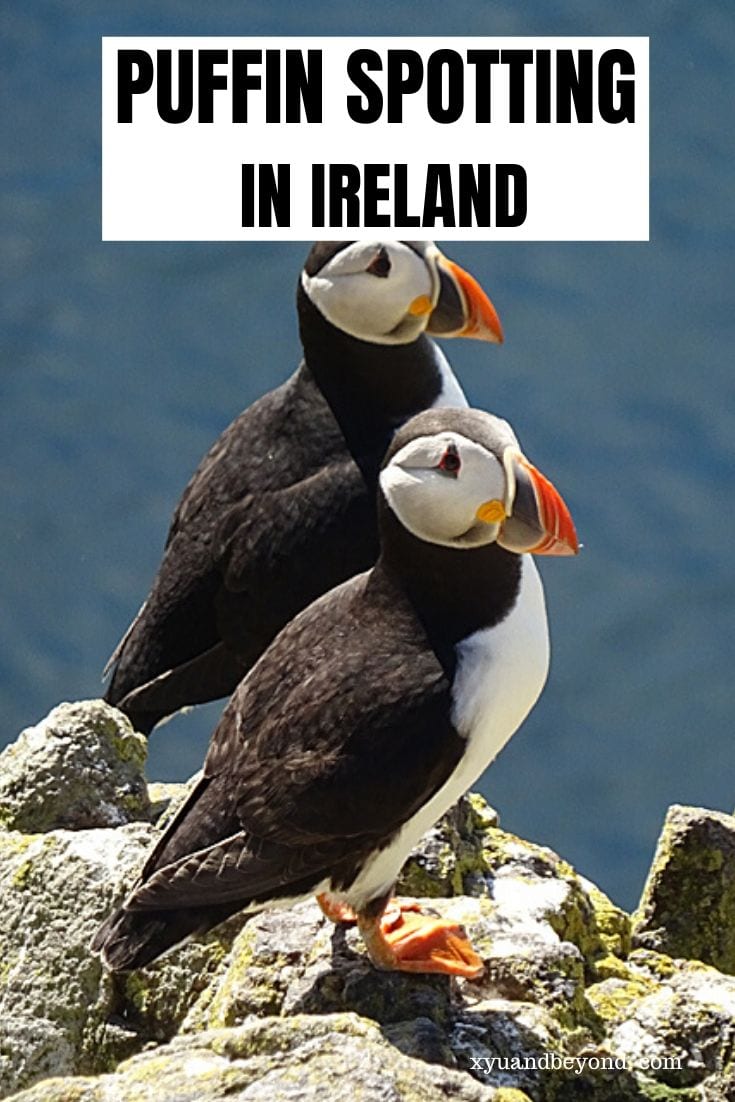Where do puffins live in Ireland?
Ever since I was a kid reading Puffin paperbacks I have loved that crazy looking bird. The Puffin is a sort of a funky cross between a colourful toucan and a penguin who couldn’t love that? Apparently, the Puffins in Ireland are a member of the auk family (as are most). Built to survive the harshest of Atlantic conditions the puffin is a fascinating bird to see up close.
Atlantic Puffin Facts
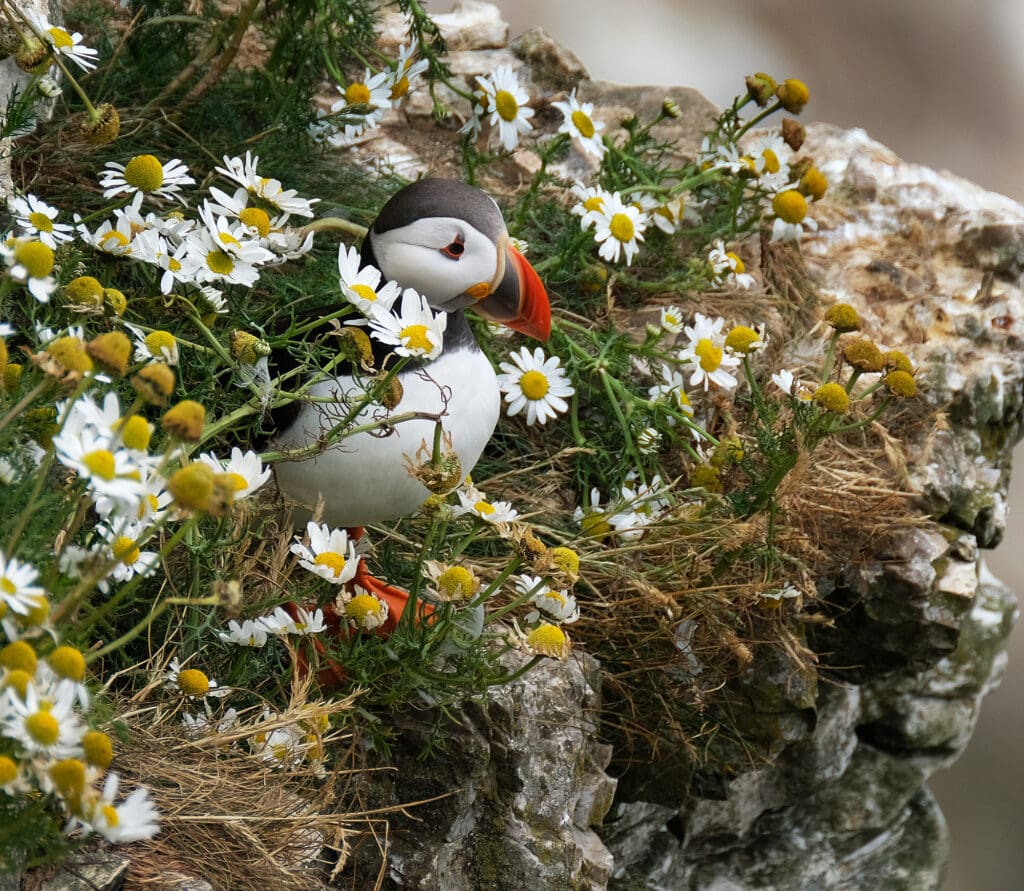
The Atlantic Puffin has orange webbed feet with really sharp claws. They stand around 20 cm high and have a wingspan of up to 63cm. Their bright orange beaks get wider and more colourful during the breeding season. These birds survive off fish like herring, hake and capelin.
- Where do puffins live in Ireland?
- Atlantic Puffin Facts
- Where to find puffins in Ireland
- Where to see Puffins in Ireland
- Seeing puffins at the Cliffs of Moher
- Seeing Puffins in Ireland from a boat
- Puffins at the Skelligs and Blasket Islands
- Ireland's Eye
- Saltee Island Wexford
- Donegal Puffins – Hornhead, Malin Head and Tory Island
- Puffin Island (Oileán na gCánóg) Kerry
- Puffins in Ireland – Rathlin Island, N. Ireland
- Puffins in Ireland at The Gobbins
Xyuandbeyond is reader-supported. When you buy through links on our site, we may earn an affiliate commission. You can read my privacy policy here.
Their body colouring is black and white and the Irish or Atlantic puffin has a multicoloured beak with a blue base and orange and yellow stripes. There is a rumour that Puffins’ beaks glow in the dark and apparently, that is true. A scientist discovered that under UV light the yellow glow is fluorescent.
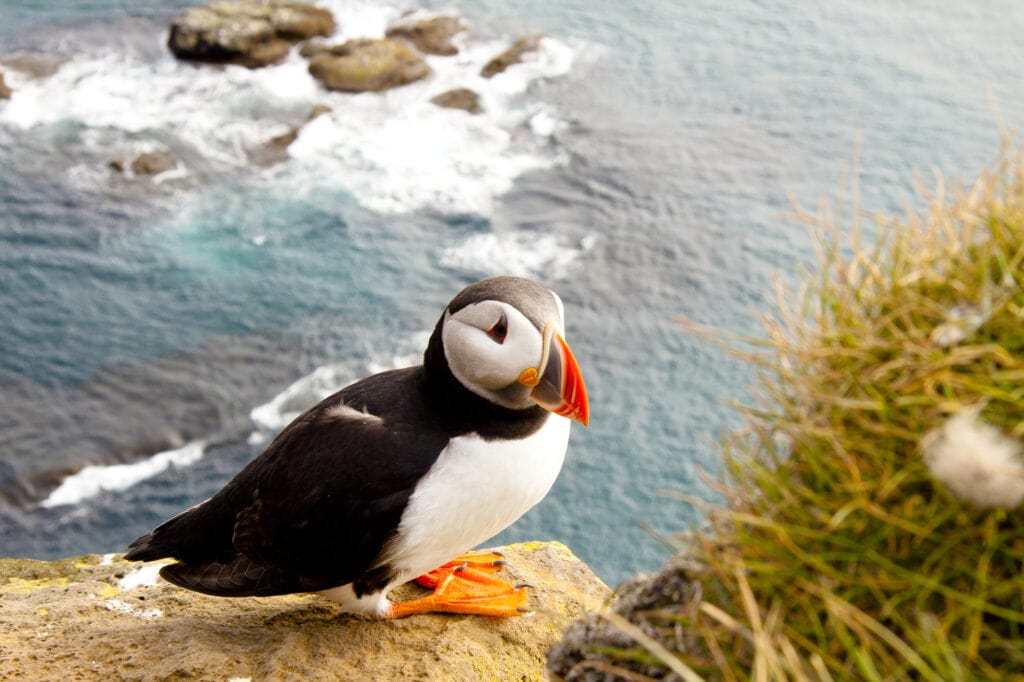
The Puffin is the National Bird of Newfoundland and Labrador. While Atlantic Puffin breeding colonies are mostly in Iceland (60% of the world’s population) they are also found in Ireland, Newfoundland and Labrador, Norway and Greenland.
Puffins belong to the Auk family the Great Auk was a flightless bird and is now extinct. Other members of the family are the Little Auk, and Guillemot, Razorbill Black Guillemot. Most of these species can be found nesting in areas of Ireland where you find the puffins.
If you love your puffins you might want this awesome 2020 calendar which you can find on Amazon.
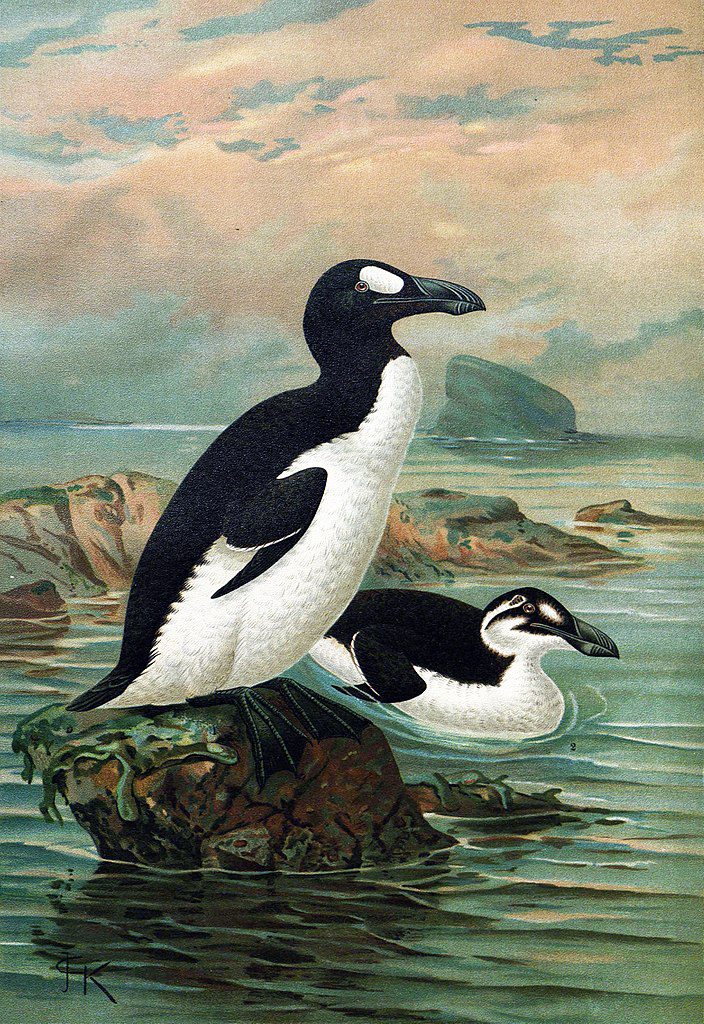
These Atlantic Puffins live in the open ocean for most of the year and flock to shore locations like Ireland to feed on sprats and sand eels. They tend to colonise in rocky outposts and small Islands from April to August.
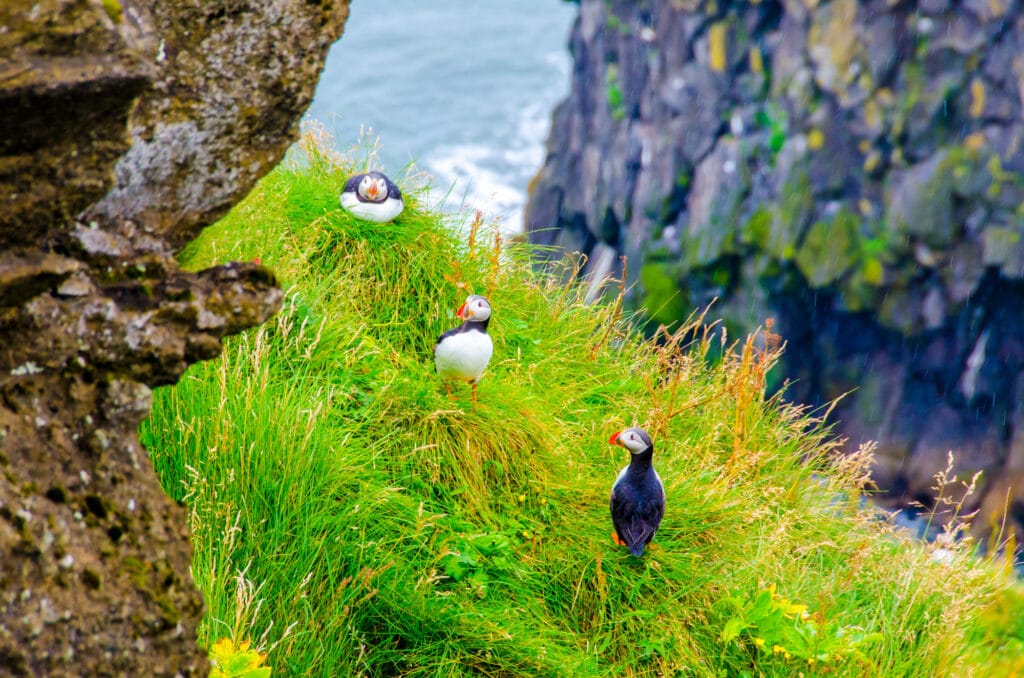
Where to find puffins in Ireland
In Ireland, Puffins breed mainly on the west Coast and in a few locations along the east coast. Puffins like the safety of the cliffs and sea stacks which are as far as you can get from predators like rats and foxes. They are known to use rabbit holes for nesting and egg-laying sometimes even chasing off the original residents.
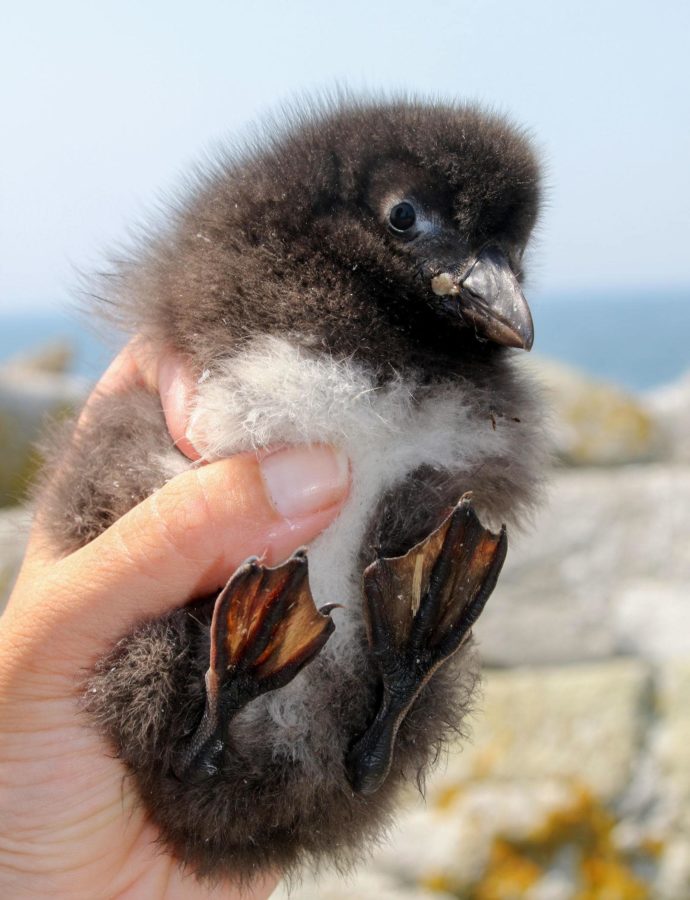
Puffins being such a hardy bird can live up to the age of 30. They start breeding at around 5 years of age but often take breaks of up to 2 years. I guess like the rest of us they need a break from babies as well. Puffins only lay one egg which takes about 40 days to hatch.
The little puffins called pufflings stay in the burrow for 40 days until it is ready to fly solo. At that point, the parent birds take off. The puffling has a strong genetic code that is imprinted in its genes so it knows how to fly, swim and catch food instinctively.
Puffins don’t mate for life, but they rarely change mates, and couples usually go back to the same place to nest year after year. Before they nest, they perform a mating ceremony where they rub their beaks together. The puffins make their nest, and the female lays a single egg. The male and female take turns caring for the egg over the 40 day period until it hatches.
Puffins and Climate Change
The Puffin population is sadly in decline globally. Studies have shown that after their long transatlantic journeys from Canada to Ireland, they are simply too tired to breed. The International Union for Conservation of Nature upgraded the Puffin’s status from “Least Concern” to “Vulnerable” in 2015.
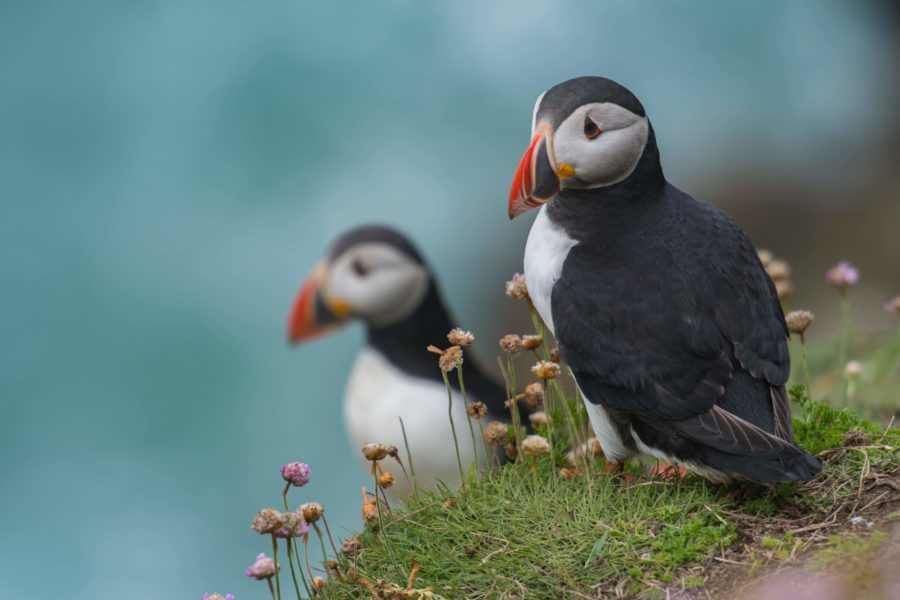
Climate change has caused a shift in food availability along with changes in water temperature. These changes mean that the fish species that puffins enjoy are affected and so there is less food for the Puffins and their chicks.
The best time to see puffins
Puffins return to the clifftop nesting areas in March and April. Once the chicks have hatched and 40 days have passed they begin to fly out again this usually takes place from around mid-August to the end of September.
Where to see Puffins in Ireland
- Cliffs of Moher
- Loop Head
- Skellig Islands & Blasket Islands
- Ireland’s Eye
- Saltee Island Wexford
- Hornhead and Malin Head Donegal
- Puffin Island (Oileán na gCánóg) Kerry
- Rathlin Island N. Ireland
- The Gobbins N. Ireland
Seeing puffins at the Cliffs of Moher
Unlike many other areas where Puffin breeds the Cliffs of Moher puffins are experiencing an increase in numbers. At the Cliffs of Moher, it is possible to spot breeding puffins. Over 60,000 birds come to nest at the Cliffs and these can be spotted from the Visitors Centre or a speciality sea cruise.
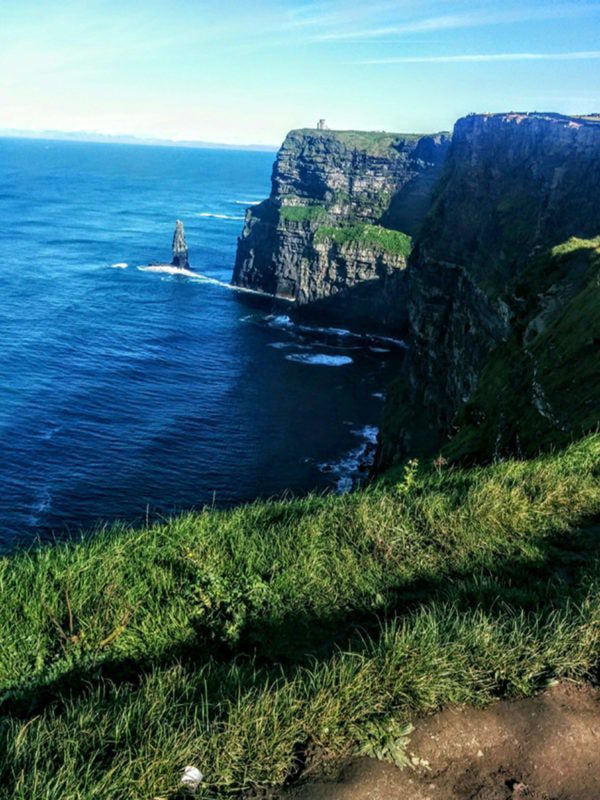
This puffin t-shirt makes me very happy lol.
The cost to see the Cliffs of Moher is €10.00 per person. If you want to climb O’Brien’s Tower at the Cliffs there is an extra charge of €4.00 per person. There is a large car park at the Cliffs and all-day parking here is included in the price of a visitor centre ticket,
Alternatively, there’s Guerin’s Path, which is about 1km away from the visitor centre and costs €5 per person. This is a family-owned farm and business and will give you a spectacular walk along the Cliffs.
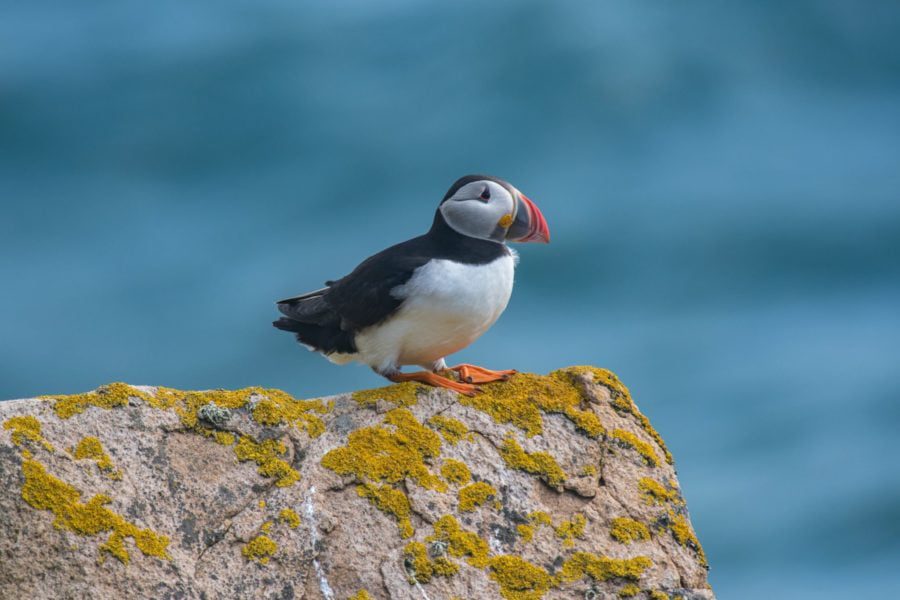
If you fancy a good hike you can leave the car in the nearby villages of Liscannor and Doolin and follow the marked trails to the Cliffs. If you can find Nag’s Head which is the most southerly point of the Cliffs there is a little car park there where you can drop €2 into the honesty box, and it’s just a 15-20 minute walk to the Cliffs.
Loop Head Peninsula in Kilkee is an absolutely phenomenal drive and walk-in place where it seems no tourist has ever been. Puffins are also pretty common around here, particularly in the area around 7 miles from the Lighthouse called the Bridges of Ross.
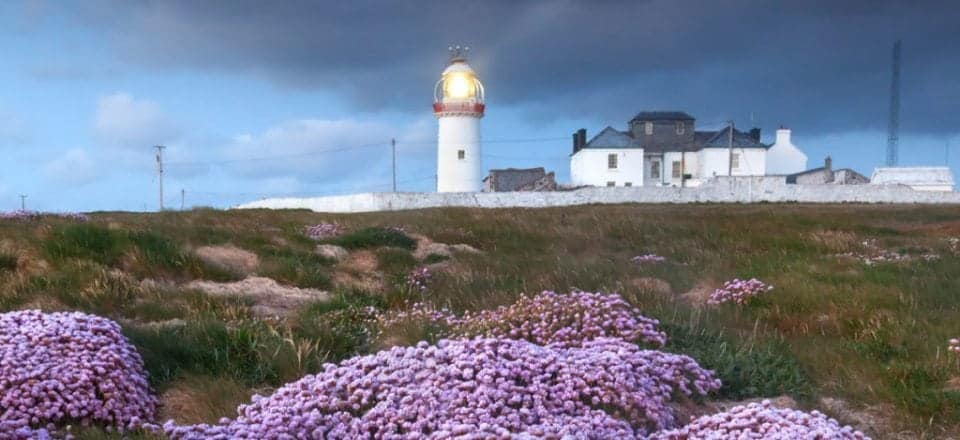
While you will see puffins at both Moher and Loop Head you better have a really good camera with a great zoom or you won’t see much more than a tiny blip on your photos. The best bet for great shots is probably a boat trip as you can see the ledges that are hidden from view on the Clifftops.
Seeing Puffins in Ireland from a boat
This really is the best way to see puffins and it is much more environmentally friendly and doesn’t disturb the puffin colonies.
Doolin 2 Aran Ferries does a range of tours that include puffin watching from the Cliffs of Moher to Loop Head. The cost of a boat tour is usually around €25 but can be booked online for a great discount.
You should also check out Abhainn Puffin Safari Cruises. They do cruises of both Rathlin Island and the Gobbins with trips lasting from 2 to 4 hours. You can call Tim on +44 (0) 7864 684857 to make a booking.
Puffins at the Skelligs and Blasket Islands
The Skelligs and Blasket Islands are an important breeding ground for Puffins and a UNESCO World Heritage Site. Home to both Puffins and the ruins of an early monastery it is also where Star Wars was filmed.
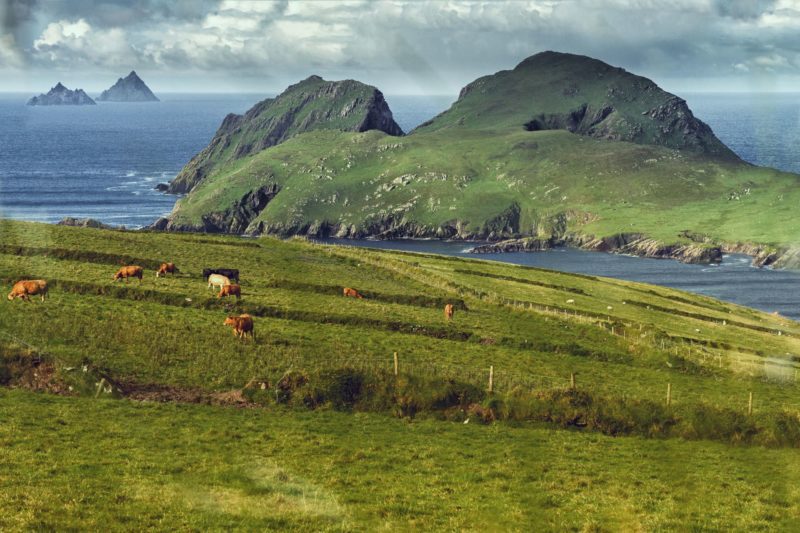
The filming of Star Wars here was quite controversial Birdwatch Ireland was very critical of the filming crews on the Island due to the helicopters and drones. Filming had to be done around the puffins without disturbing them and they then had to be digitally altered to become “Porgs”.
Puffins arrive in the Skelligs around mid-April but by mid-August, they have mostly left for other areas of the world. Weather and sea conditions are often very rough so be prepared to have your tour cancelled at the last minute.
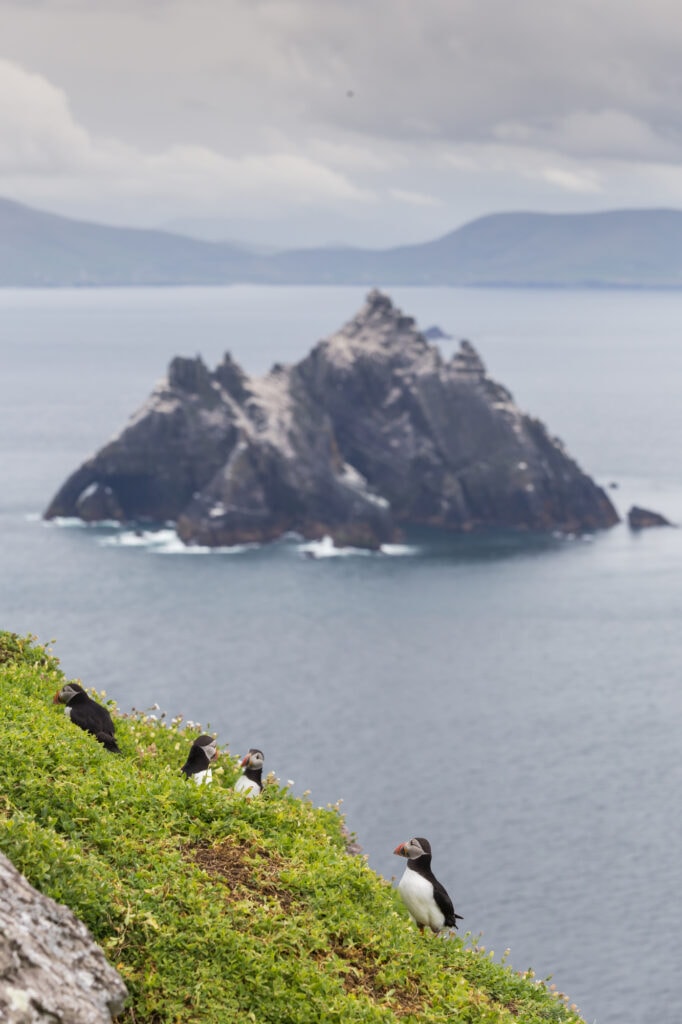
The absolute best way to see Puffins in the Skelligs is by boat. There is talk that actual trips to land on the island of Skellig Michael will be curtailed in the near future due to the concerns of over-tourism. Taking a boat tour is much more environmentally sound. Marine Tours does several tours around the Skelligs and Blasket Islands that you can take for around €75.00 this will not only take you on a boat tour but also allows you to land and explore the Blasket Islands, this tour lasts 7 hours.
The Skellig Island Eco tour around Skellig Michael and the small Skelligs tour circles both Skellig Islands and you get right up close to Skellig Michael and the small Skelligs to see both the wildlife and the historical sites. The cost is around €40. The Skelligs makes a perfect side trip when doing the Ring of Kerry.
Ireland’s Eye
Ireland’s Eye is a small island off the east coast of Ireland from Dublin. A 15-minute boat ride from Howth on Dublin’s northside will take you to this beautiful and mostly untouched island.
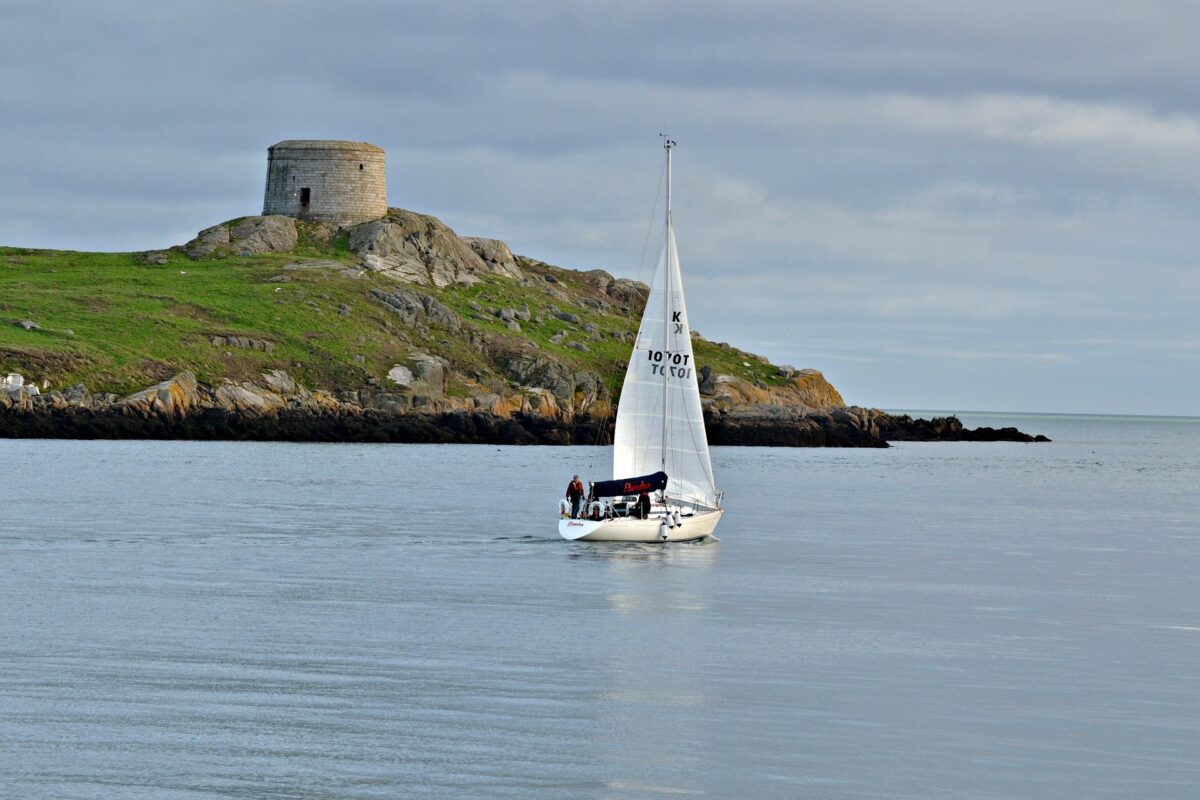
The only signs of human activity on Ireland’s Eye are two structures: a Martello Tower and the ruins of a church. However, this is one of the few places you will find Puffins on the eastern side of Ireland.
The only access to Ireland’s Eye is by a regular small boat service that runs during the summer months from the west pier in Howth Harbour. The landing point is on the north side of the island, close to the Martello Tower. When you disembark follow the path that runs along the north end of the Island. It will be covered in bracken and weeds and can be very slippery so take care. From this path, there are several viewpoints where you might see the nesting puffins but the area at the back of the Martello tower has some good views.
Saltee Island Wexford
The Saltee Islands are situated approximately 5km off the coast of Kilmore Quay County Wexford. The larger island, Great Saltee, is the most famous bird sanctuary in Ireland and is very popular with both day-trippers and birdwatchers alike.
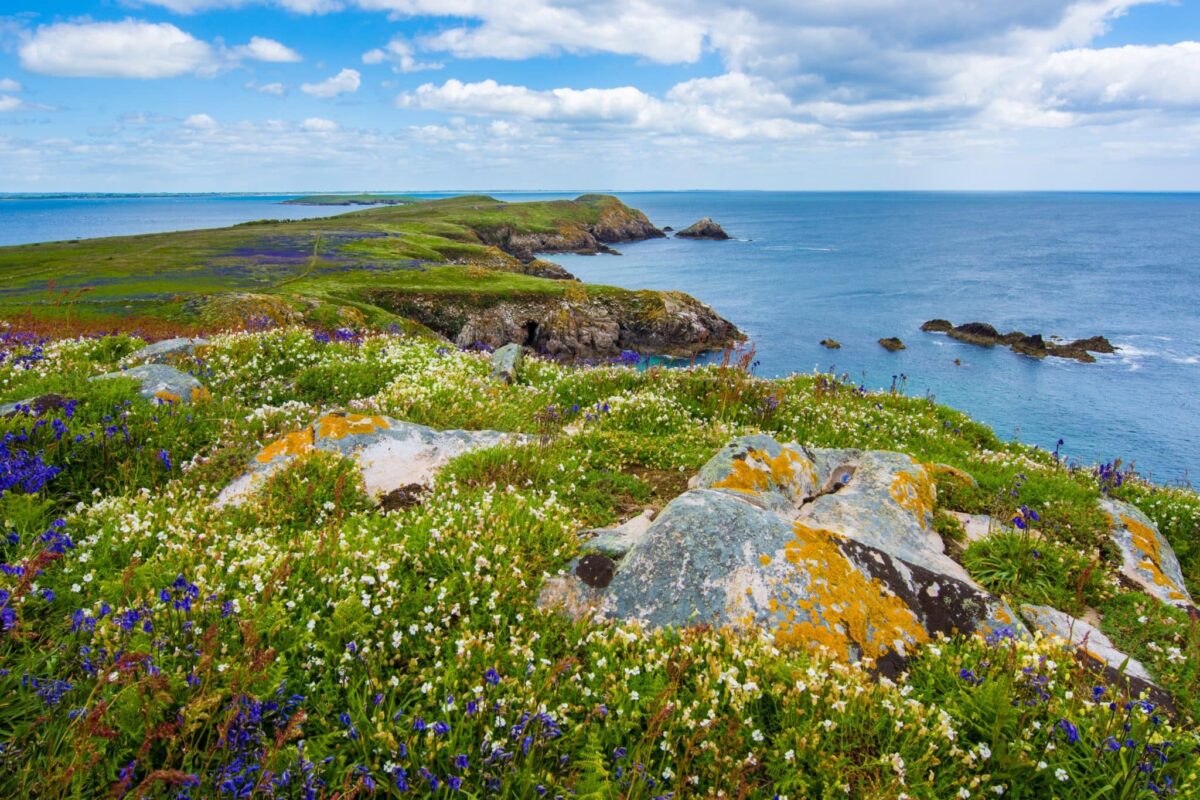
This is not an Island for the mobility challenged, it is difficult, slippery and wet and there are no good marked paths. There are also no facilities on the island so what you bring make sure you take back with you.
Day visitors are allowed on Great Saltee between 11 am and 4:30 pm only. These are privately owned islands. Day visitors to the Greater Saltee are kindly requested to respect the following rules
and safety issues:
* Please pay careful attention to the cliff areas as the ground is unsteady and may give way.
* Please remember you are in a remote location and help might be slow.
* No camping is allowed on the islands at any time. The lighting of fires is strictly forbidden.
* Please take with you any rubbish you might have as rare birds and rabbits could be harmed.
* The use of DRONES is strictly forbidden as it is intrusive and a danger to the birds.
* Dogs are not allowed on the Islands for obvious reasons.
Declan is the fella to contact about trips to the Saltee Islands day trips cost around €30 you can reach him at 053-912 9684 or 087 252 9736.
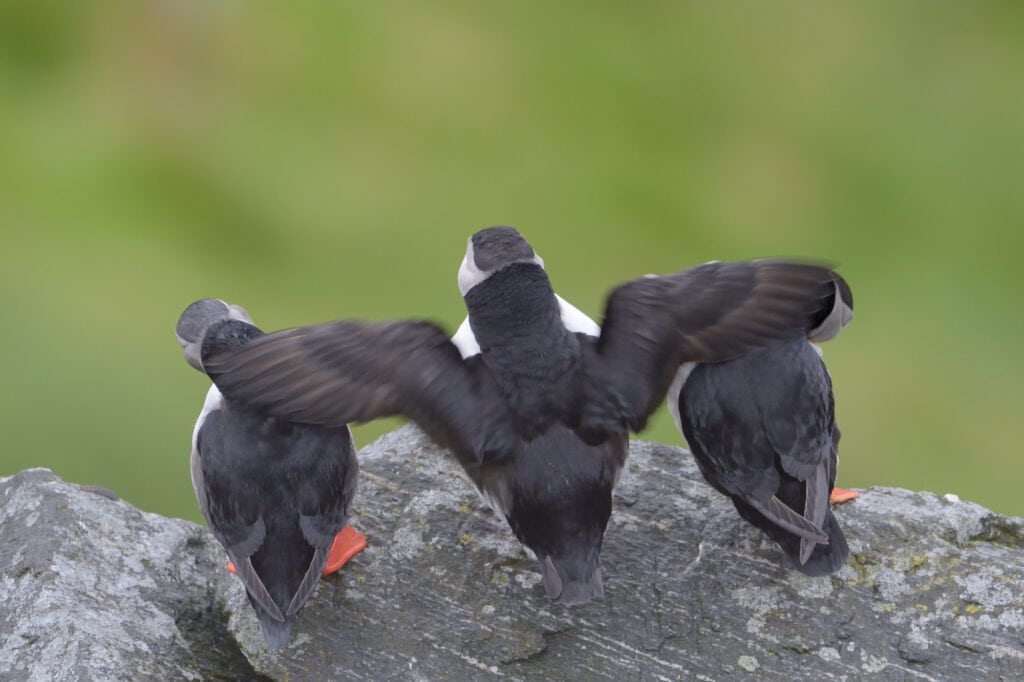
Donegal Puffins – Hornhead, Malin Head and Tory Island
Tory Island is located at the far Northwest corner of Ireland, off the Donegal coast. This remote, inhabited island has a daily ferry service. The puffin colony nests on the Northern cliffs. Tory Island is a paradise for various bird species and the entire island is a Special Protection Area (SPA) under the EC Birds Directive.
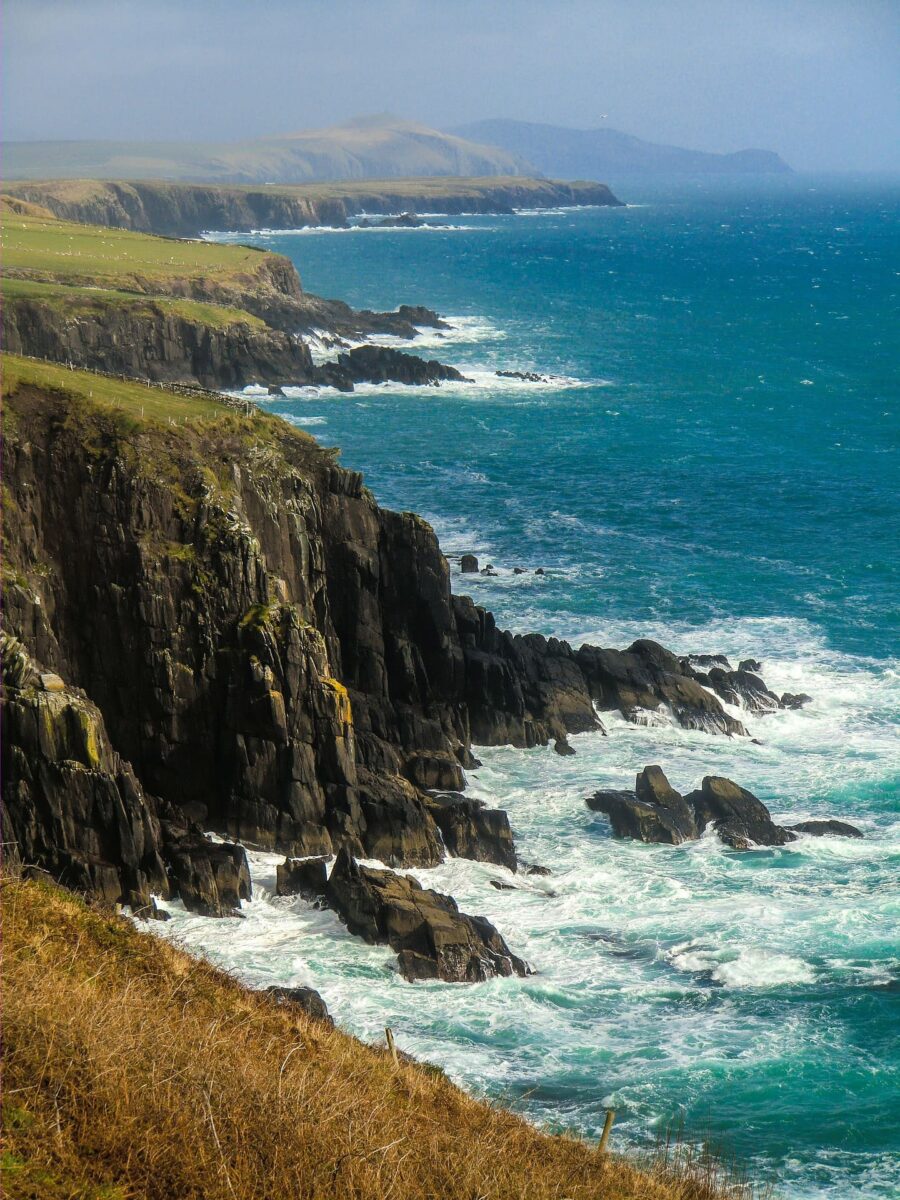
You can get to Tory Island by Ferry which leaves from the pier at Magheroarty between April and October with a restricted service in winter and early spring.
Across the bay from Dunfanaghy is Horn Head, a peninsula which forms part of Sheephaven Bay.

Horn Head Cliffs are an internationally recognised colony for breeding seabirds. It has Ireland’s largest mainland seabird breeding colony. There are guillemots, gannets, puffins, shell drakes, stormy petrels, speckled divers, and choughs.
At Malin Head, on the Inishowen Peninsula, there are many coastal walks and cliff tops from which Puffins can be spotted.
Puffin Island (Oileán na gCánóg) Kerry
Puffin Island (Oileán na gCánóg) of the coast of County Kerry is in a cluster of small unpopulated islands including Horse Island, Long Island, and Short Island. Puffin Island is owned by Birdwatch Ireland and is a very important bird sanctuary.
There is no pier and landing requires the visitor to clamber over rocks before climbing to a plateau of thick grass. To get to see Puffin Island you must take an approved Birdwatch Ireland tour and sign a disclaimer contact Willie Kennedy, Ballinskelligs, Co Kerry: 087 222 9787 for more information and costs.
Puffins in Ireland – Rathlin Island, N. Ireland
Rathlin Island lies just six miles off the north coast of Northern Ireland’s Causeway Coast and is accessible by ferry from Ballycastle, Co. Antrim, and it is home to one of the UK’s largest seabird colonies, including hundreds of puffins and you find some great glamping at the Rathlin Island Glamping Pods.
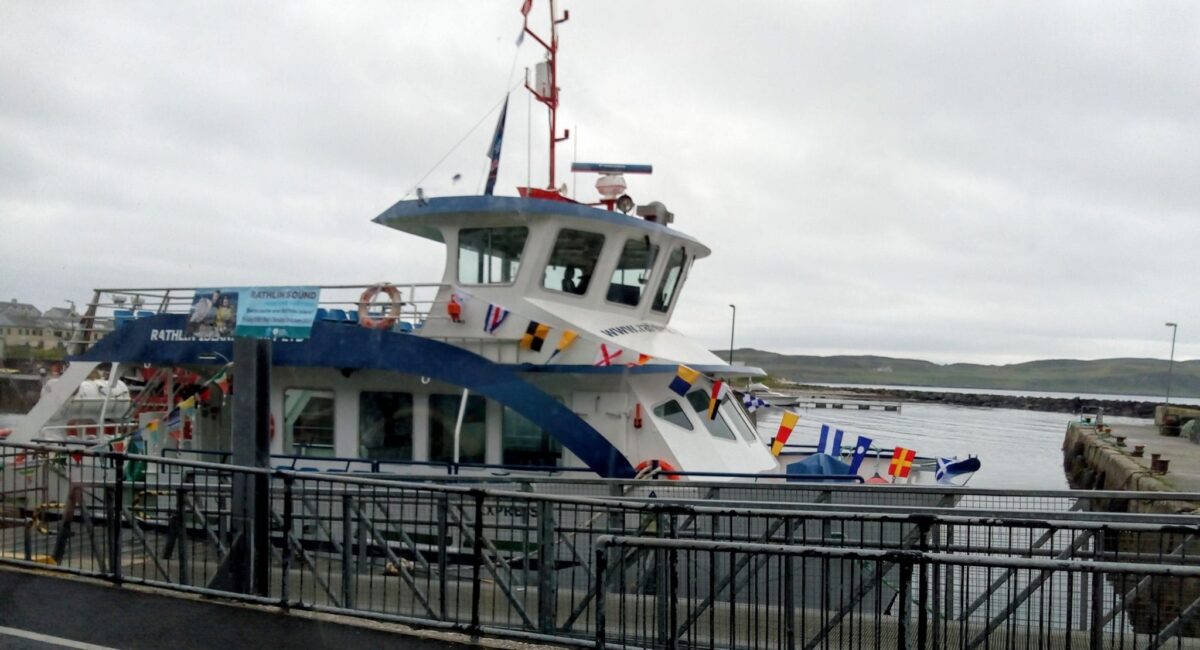
The ferry ride to Rathlin can take either 40 or 20 minutes depending on which ferry you catch the cost is around £12.00 return. You can buy your tickets at the Ferry offices in Ballycastle and park your car there for a small fee.
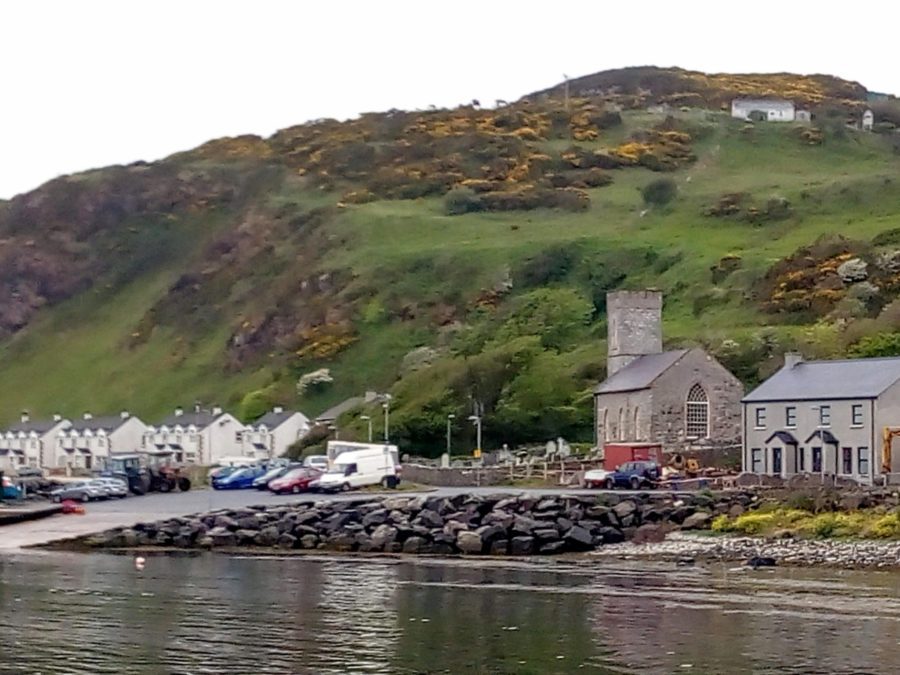
Once you get to Rathlin Island you will more than likely see the Puffin bus which will take you to the Rathlin West Seabird Centre which is on the west side of the Island.
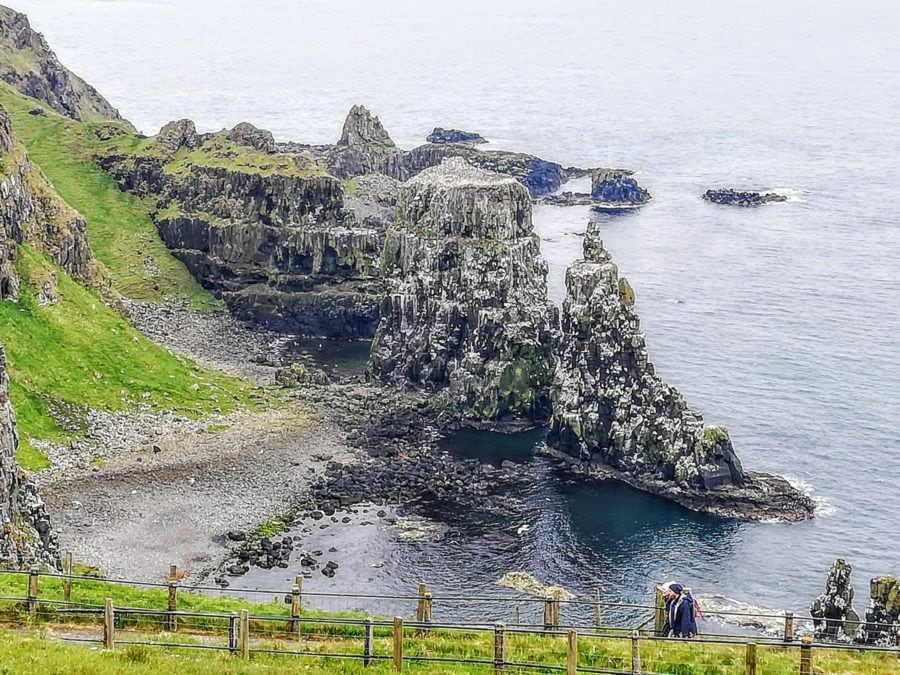
You will love driving the Causeway Coastal route on your way to Ballycastle to get to Rathlin Island
It is a beautiful drive there although a little hairy in spots but the drivers obviously know what they are doing. Cost of the bus return is only £5.00 and will take at least a couple of hours so make sure you book the right ferry time back to the mainland.
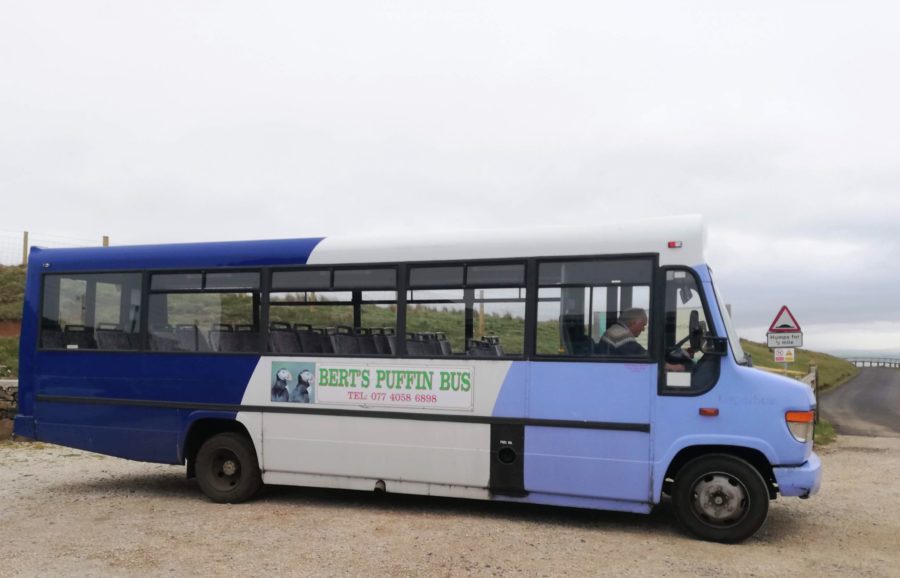
From the Seabird Centre, you basically walk and climb down over 200 steps, not for the physically challenged that’s for sure. You will spot the ‘upside down’ lighthouse at the bottom and it is from here you can view the puffins and their nesting sites.
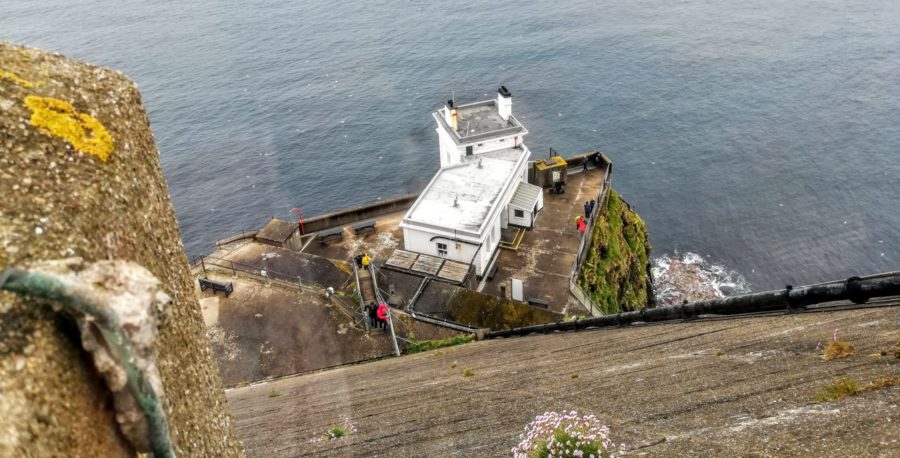
The Rathlin West Light Seabird Centre is open from 10 am until 5 pm every day until the end of September and can be accessed via the Rathlin Trail. Admission is £5 for adults.
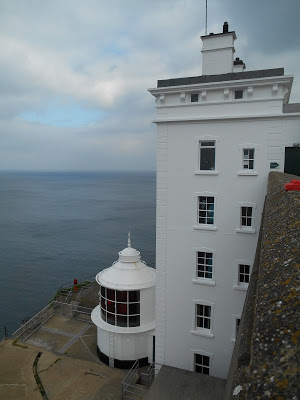
Puffins in Ireland at The Gobbins
Northern Ireland’s only mainland colony of Puffins can be found along the Gobbins cliffs. When the paths were re-engineered for tourist traffic they were very careful to not disturb the local bird and wildlife.
The Gobbins Coastal Path must be booked online ahead of time and you have to be prepared with proper clothing and hiking boots with a thick tread and ankle support. The Gobbins walk is not for the physically disabled or those who cannot walk for several hours.
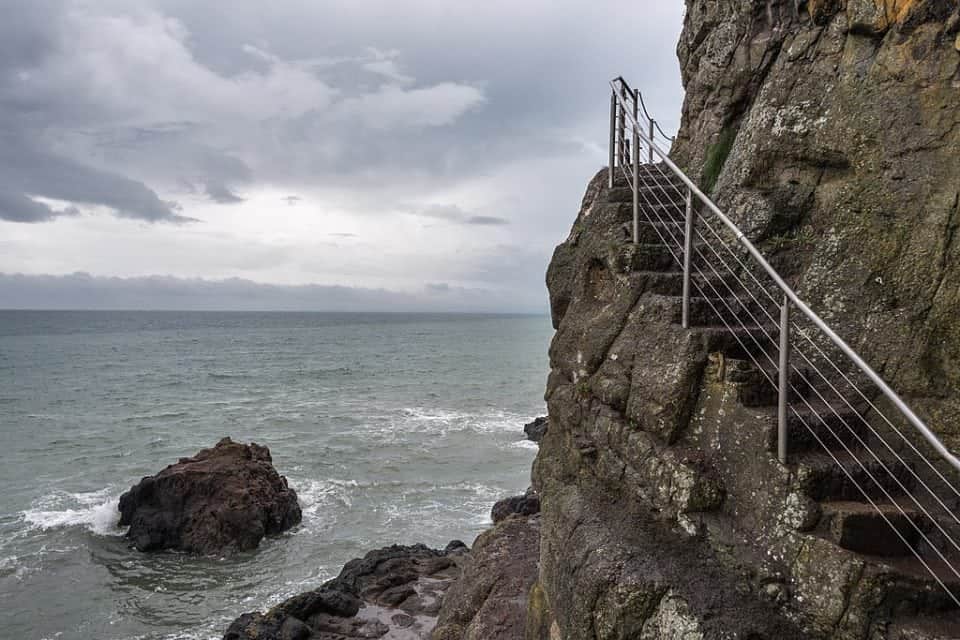
The Gobbins Coastal Path is a strenuous 3-mile walk with a steep access path to the lower cliff path which includes gradients of up to 1:4 in places. The path is narrow with many hand-carved uneven steps that wind up and down along the bottom of the cliff. It is the equivalent of climbing and descending 50 flights of stairs.
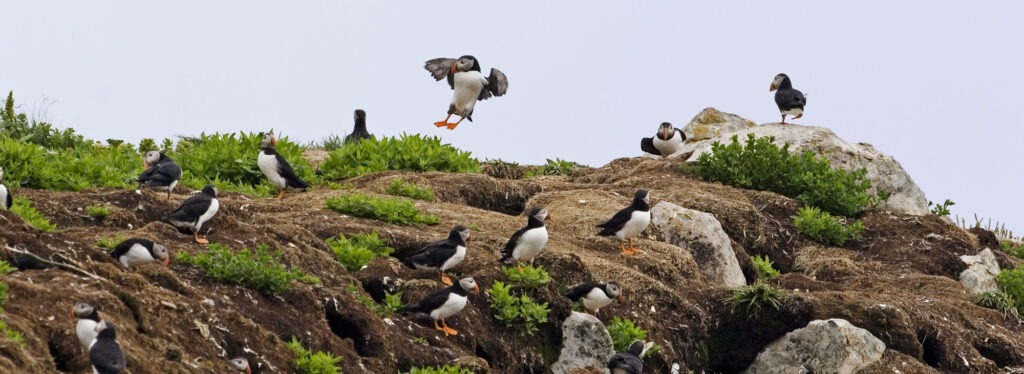
The Gobbins Walk will cost you per walk Adult £15 and child and seniors £12.
So there you have it all the places to find Atlantic Puffins across Ireland. Have you managed to spot any yet?
Here are a few more articles to read on visiting Ireland.
The best of Irish slang and 100+ Irish slang phrases
101 Landmarks in Ireland to see
101 Landmarks in Northern Ireland
Ultimate Wild Atlantic Way Route
Ireland’s Ancient East – an epic road trip
Rough & Rugged Glencolmcille Ireland 5000 years of history
Cliffs of Slieve League the magnificent sea cliffs of Donegal
15 tips for celebrating St. Patrick’s Day in Dublin
44 of the best things to do in Belfast
Pin it so you don’t lose it
